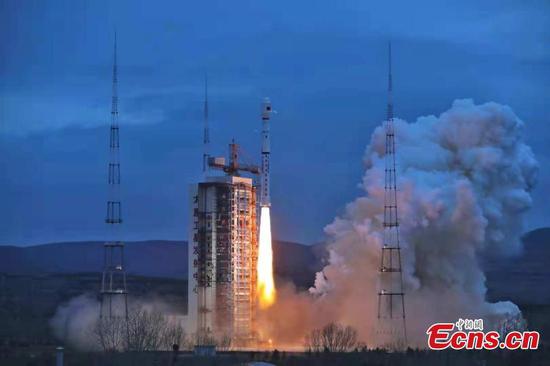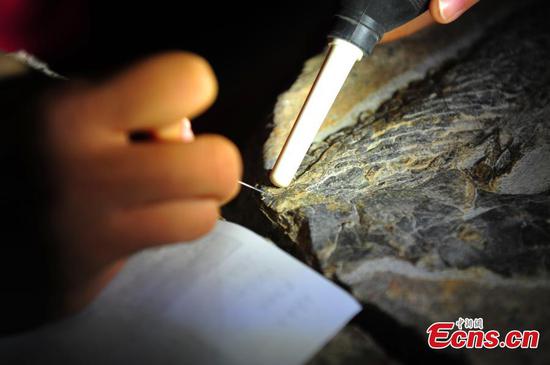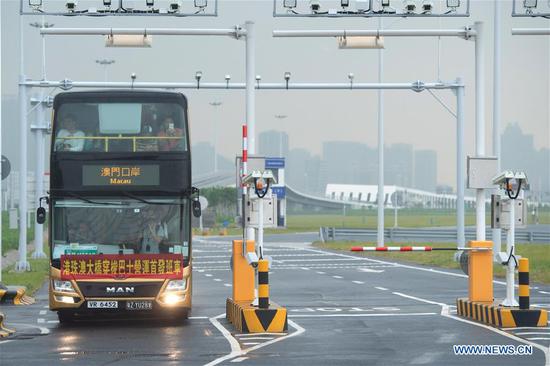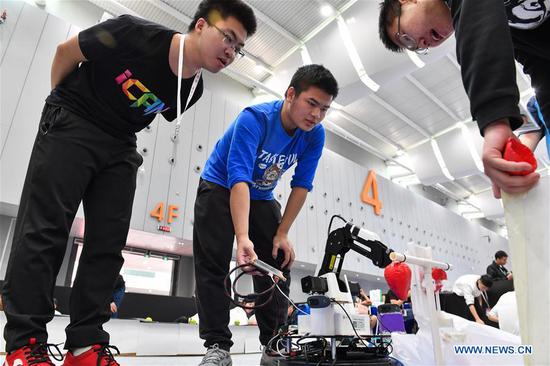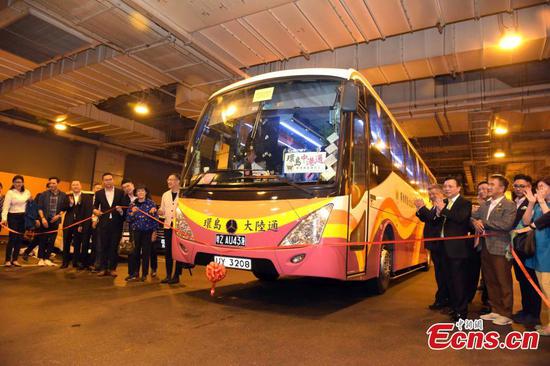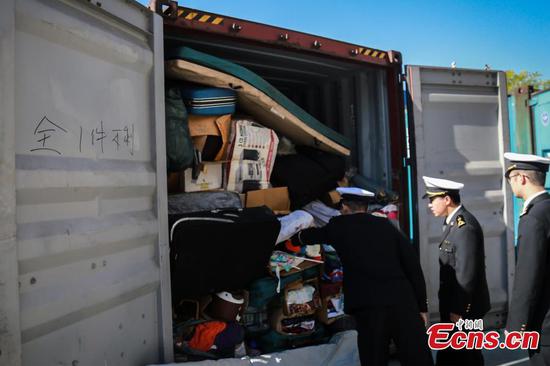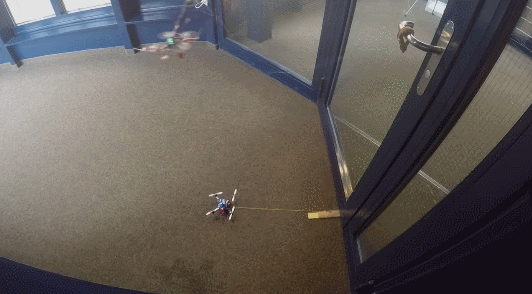
Outfitted with advanced gripping technologies and the ability to move and pull on objects around it, FlyCroTugs can jointly lasso the door handle and heave the door open. (Gif via Stanford University)
Researchers of Stanford University on Wednesday released a new type of flying, micro and tugging robot called FlyCroTug, which can move and pull objects up to 40 times its weight.
Outfitted with advanced gripping technologies and the ability to move and pull on objects around it, FlyCroTugs can jointly lasso the door handle and heave the door open.
According to the research paper published Wednesday in Science Robotics, FlyCroTugs are developed in the labs of Mark Cutkosky, chair of the School of Engineering at Stanford University, and Dario Floreano at the Swiss Federal Institute of Technology in Lausanne.

Each FlyCroTug has a winch with a cable and either micro-spines or gecko adhesive in order to tug. Beyond those fixed features, they are highly modifiable. The location of the grippers can vary depending on the surface where they will be landing, and the researchers can also add parts for ground-based movement, such as wheels.
FlyCroTugs can anchor themselves to various surfaces using adhesives inspired by the feet of geckos and insects, according to researchers.
With these attachment mechanisms, FlyCroTugs can pull objects up to 40 times their weight, such as door handles, cameras and water bottles in a rescue situation. Similar vehicles can only lift objects about twice their own weight using aerodynamic forces.
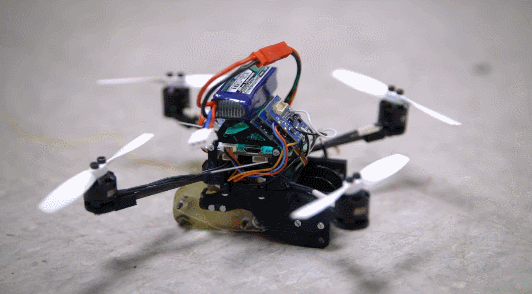
FlyCroTugs' small sizes enable them navigate through snug spaces and fairly close to people, making them useful for search and rescue, researchers said. Holding tightly to surfaces as they tug, the tiny robots could potentially move pieces of debris or position a camera to evaluate a treacherous area.
"When you're a small robot, the world is full of large obstacles," said Matthew Estrada, a graduate student at Stanford and lead author of the paper on FlyCroTugs. "Combining the aerodynamic forces of our aerial vehicle along with interaction forces that we generate with the attachment mechanisms resulted in something that was very mobile, very forceful and micro as well."











